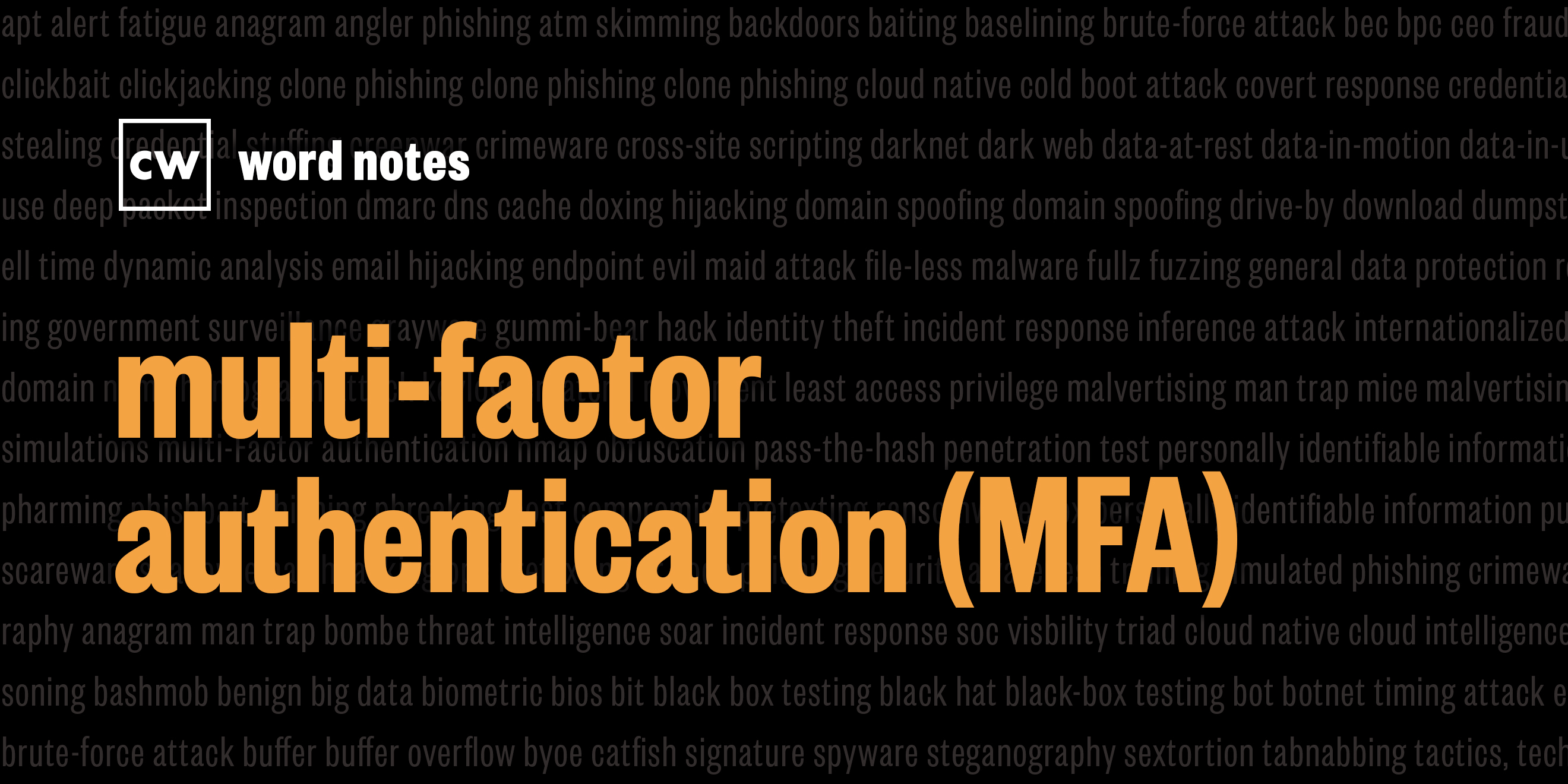
multi-factor authentication (noun)
Rick Howard: The word is: multi-factor authentication.
Rick Howard: Spelled: Multi-factor as in multiple methods and authentication as in proving who the user is.
Rick Howard: Definition: The use of two or more verification methods to gain access to an account.
Rick Howard: Example sentence: Accessing an account with multi-factor authentication enabled can require something you have, like a smartphone, something you are, like your fingerprint, or something you know, like a password.
Rick Howard: Origin and context: Also known as two-factor authentication, 2FA or MFA.
Rick Howard: Dr. Fernando Corbato invented the first computer password in 1961. Only a couple of decades later, the development of biometric authentication pioneered a global movement of crime fighting and interconnected data.
Rick Howard: In the 1980s, the Japanese created the first digital fingerprinting system. This biometric digital evolution eventually enabled law enforcement around the world to cross check a fingerprint with millions of records almost instantaneously. AT&T was the first to patent two-factor authentication in 1995, despite kim.com's claims that he was the first.
Rick Howard: As biometric technologies like facial recognition and iris scans became more accurate, commercial versions grew in popularity. I mean, who wouldn't want to feel like a spy unlocking their wearable gadgets with their eyes? I know I would. To the general population MFA, while cumbersome, could appear like the savior everyone has been waiting for to thwart cyber crime. But if you've been in cybersecurity for any amount of time, you know that there is no silver bullet.
Rick Howard: Roger Grimes, KnowBe4's Data-Driven Defense Evangelist, reminds us that just about anything can be hacked. " I can hack any MFA solution at least five or six different ways. And right now I'm writing my latest book on the topic and it looks like I'll be able to document close to 50 ways to defeat MFA ."
Rick Howard: Nerd reference: In the 1983 James Bond movie Never Say Never Again, Captain Jack Petachi played by Gavan O'Herlihy is a United States Air Force pilot forced by the criminal organization SPECTRE to hijack a pair of atomic warheads. SPECTRE forces Petachi to undergo an eye operation to make his retinal pattern match the President of the United States which allows him to steal the warheads. For the James Bond nerds out there, Never Say Never Again was the final performance in a movie by Sir Sean Connery playing James Bond and was essentially a remake of the movie Thunderball that he made in 1965.
Rick Howard: And in the category of you can't make this up, the closing credits include the line, "Thanks A.K." It refers to Adnan Khashoggi, the Saudi arms dealer who allowed the movie producers to film aboard his 282-foot yacht, the Nabila.. He later sold the yacht to Donald Trump who renamed it, the Trump Princess. And now, you know that. You're welcome.
Rick Howard: Word notes is written by Nyla Gennaoui, executive produced by Peter Kilpe, and edited by John Petrik and me, Rick Howard. The mix, sound design, and original music have all been crafted by the ridiculously talented Elliott Peltzman. Thanks for listening.

